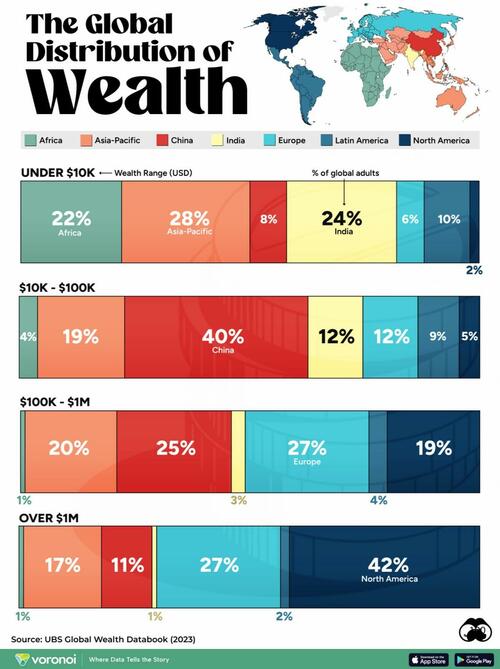The distribution of wealth provides insight into a region’s stage of economic maturity.
As economies grow, they are more likely to have a higher share of adults with greater wealth. Naturally, incomes increase as corporate profitability flourishes, shifting the distribution of earnings.
Visual Capitalist's Marcus Lu and Dorothy Neufeld created the following graphic, based on data from UBS, to show the share of adults across global regions by their wealth range.
Here’s how patterns of wealth compare around the world:
North America and Europe, which have advanced economies, represent the largest share of people in the “over $1 million” range.
China, which is transitioning to a more service-oriented economy, accounts for a large chunk of people within the $10K to $1 million range.
Emerging markets like India account for larger shares of the bottom two wealth ranges.
Overall, inequality within countries and between countries has increased since the 1980s. Yet global median wealth has increased fivefold since 2000, driven by the economic expansion of China lifting the global median level.

